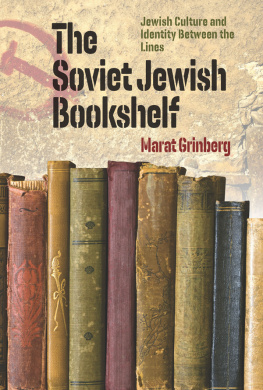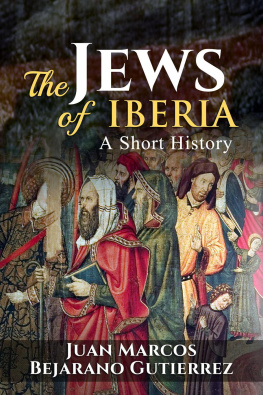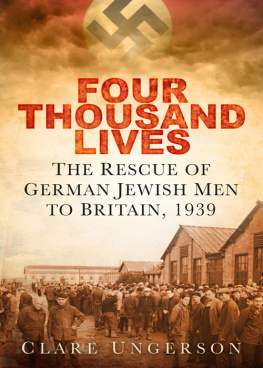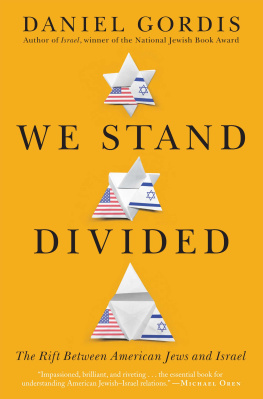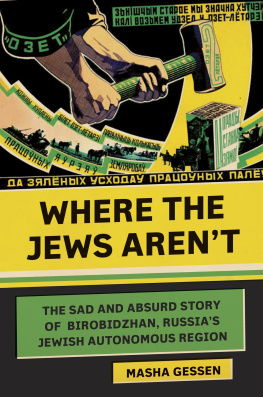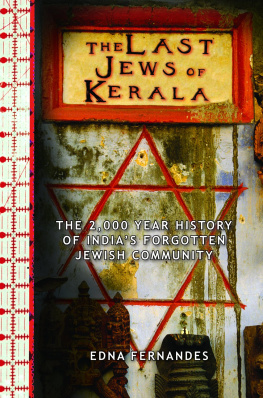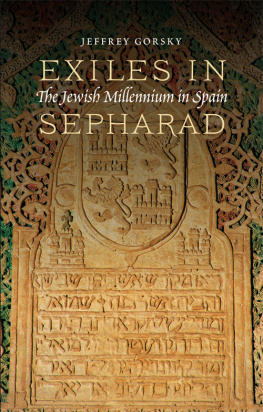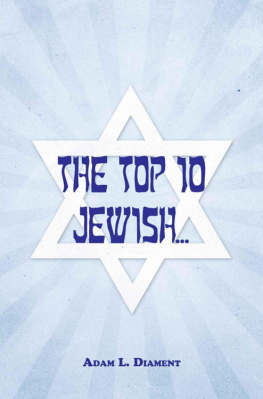A HISTORY OF THE JEWS OF OCHIN P.
The story of the Jews of Cochin, a tiny community on the Spice Coast of southwest India, spans at least two thousand years. According to legend, the apostle Thomas found a Jewish presence in this area, and the sandalwood in Solomons temple at Jerusalem may well have come from Cochin. The earliest extant record is an inscription, dated 1000 AD, in Malayalam on copper plates, by which Indian princes granted exemption from taxation and other privileges to one Joseph Rabban. At about the same time a largely autonomous Jewish principality was set up at Shingli (Cranganur) near Cochin. After the arrival of the Portuguese in about 1500, their antipathy forced the Jews to abandon Shingli to settle at Cochin under the protection of the Rajah. There they maintained a vigorous Jewish life in spite of the terror of the Inquisition initiated at Goa in 1560. The Jewish community at Cochin probably never numbered more than 2000, divided, under the Indian caste system, between those of full Jewish descent and the blackoffspring of intermarriage with the indigenous population. Dutch rule from 1663 heralded a period of prosperity, but the coming of the British in 1795 led to a decline in the fortunes of the Jews. Finally, as Indian independence was closely followed by the establishment of the State of Israel in 1948, most of the community emigrated en masse to the Jewish homeland, and today only a handful of Jews remain in Jew Town, Cochin, to testify to this colourful saga of Jewish loyalty and courage. ISBN 0 85303 252 1
J.B - Sega! is Emeritus Professor of Semitic Languages in the University of London, and author of, among others, The Hebrew Passover (1963) and Aramaic Texts from North Saqqara (1983). He has travelled widely throughout the Middle East, and excavated at Edessa (Urfa) in south-east Turkey. He has paid four extended visits to Cochin, and represented London University at the quatercentenary of Paradesi Synagogue there in 1968. Printed in Great Britain
A HISTORY OF THE JEWS OF COCHIN
w 0 Frontispiece: Ark, Paradesi synagogue, Jew Town, Cochin
A HISTORY OF THE JEWS OF COCHIN J. B. Segal VALLENTINE MITCHELL
First published in 1993 in Great Britain by VALLENTINE MITCHELL & CO. LTD. Gainsborough I-louse, Gainsborough Road, London Eli iRS, England and in the United States of America by VALLENTINE MITCHELL do International Specialized Book Services, Inc. 5804 N.E. Hassalo Street, Portland, Oregon 97213-3644 Copyright 1993 J. B. Segal British Library Cataloguing in Publication Data Segal,J. B. History oftheJews of Cochin I. Title 954.83004924 ISBN 0-85303-252-1 Library of Congress Cataloguing-in-Publication Data Segal,J. B. A history oftheJews of Cochin IJ.B. Segal. p. cm. Includes bibliographical references and index. ISBN 0-85303-252-1 1. JewsIndiaCochinHistory. 2. Cochin (India)Ethnic relations. I. Title. DS135.I62C675 1993 954.83dc2O 93-14858 CIP Al! rights reserved. No part of this publication may be reproduced in anyform or by any means, electronic, mechanical, photocopying, recording or otherwise, without the prior permission of I7allentine Mitchell & Co. Ltd. Typeset by Vitaset, Paddock Wood, Kent and printed in Great Britain by Watkiss Studios Ltd, Biggleswade, Beds.
Contents Illustrations Vii Abbreviations viii Preface ix Chapter 1: The Early Centuries 1 Chapter 2: The Portuguese Period 14 Chapter 3: The Dutch Period 37 Chapter 4: British Rule to Independence 64 Notes 103 Bibliography 120 Index 130 V
To Satto Koder, the Ezekiel Rahabi of tli is eizeration, and Gladys Koder, in admiration and affection vi
Illustrations Frontispiece: Ark, Paradesi synagogue, Jew Town, Cochin facing page Map 1. Kerala, southwest India 4 1. Estuary, River Periyar 5 2. Facsimile of the Copper plates ofJoseph Rabban 8 3. Jew pool, Cranganur 9 4. Foundation inscription, Cochangadi synagogue 30 5. Synagogue, Chennamangalam 31 6. Eru,,Parur 44 7. Passageway entrance to synagogue, Parur 45 8. Foundation inscription, synagogue. Parur 64 9. Ark scrolls, synagogue, Parur 65 10. Notisias, by Mossch Pereyra de Paiva 84 11. Paradesi synagogue, Cochin; in foreground, temple of the Rajah ofCochin 85 12. Jew Town, Cochin 96 13. Clock tower with Hebrew numerals, Paradesi synagogue, Cochin 97 14. Interior, Paradesi synagogue, Cochin, showing upper and lower pulpits 100 Map 2. Cochin and vicinity 101 vii
Abbreviations Bab Taim Babylonian Talmud BSOAS Bulletin of the School of Oriental and African Studies EJ Encyclopedia Judaica JAOS Journal of the American Oriental Society JE Jewish Encyclopedia JRAS Journal of the Royal Asiatic Society M Or Cambridge University Library M Or RE] Revue des tudesjuives viii
Preface THIS IS the story told as far as possible in the words of contemporary observers of a minuscule community on the Spice coast of southwest India that maintained a vigorous Jewish existence throughout the vicissitudes of at least two millennia. Submerged among myriads of non-Semitic peoples, in bad times and good, whether amid the terror of the iniquitous Portuguese Inquisition or under the liberal regime of the Netherlanders, the Jews of Cochin never wavered in their loyalty to Judaism and their friendship with their Indian neighbours. And when the State of Israel was established, most of them left, however reluctantly, their beautiful synagogues in India and emigrated en masse to join their brethren in the Jewish homeland. I express my sincere gratitude to Professor Charles Beckingham, Mrs Liliya Bregel, William Frankel, Professor P. M. Jussay, Naphtali Koder of Haifa, Carole Murray, Dr Harold Rose, and my wife Leah Segal, for their interest, help and encouragement. But responsibility for errors in this volume is wholly mine. J. B. Segal ix
CHAPTER 1 The Early Centuries THE TOWN of Cochin and the district to which it gives its name is situated on the sea coast at the centre of the State of Kerala in SouthWest India known also as Malabar) An ancient myth relates that in very early times this region lay beneath the sea. Over the flooded area Parasu Rama, the sixth incarnation of the god Vishnu, cast his axe; it fell at Cape Comorin. Thus was created Kerala. The legend is, of course, aetiological; it explains in mythological language how the caste of Namputiri Brahmins were destined to win their dominant status in Kerala. But modern scholars have rightly seen in the story a reflection of the peculiar geographical isolation of the region. For Kerala, lying between the ranges of the Western Ghats and the indian Ocean, consitutes a welldefined physical entity, separate from the rest of the Indian sub-continent. Kerala extends over no more than 15,000 square miles. Yet in its features it is strikingly distinctive. It consists of three narrow longitudinal strips of land an alluvial coastal plain, a iow plateau and foothills, and finally the highlands. The present coastal plain is the product of movements of the sea during the past 2,000 years, and cities that were once beside the sea today stand inland. The original coastline seems to be marked by the course of the Backwaters, a line of inland lakes and waterways running parallel to the present coastline. Along the eastern border of Kerala is a chain of mountains, the southern ranges of the Western Ghats the Nilgiris (Blue Mountains), the Annaimalais, and in the extreme south the Cardamoms (Spice Mountains). The mountains reach almost to the southernmost tip of the sub-continent. They are not very high, rarely more than about 4,000 feet, but they are precipitous. They 1
A HISTORY OF THE JEWS OF COCHIN can be crossed oniy by the little Shencottah Gap in the south, which is too restricted to be used by large scaletraffic, and by the Palghat Gap in the north.2 Kerala, then, is effectively screened from the remainder of the subcontinent, and this has greatly influenced its historical development. It looks towards the west, and the principal mode of entry is from the sea. It has several small natural harbours. Here again movement was limited before the invention of steam transport. The navigation of sailing ships was controlled by the monsoon winds; they could travel safely and quickly to Kerala from both east and west and return homewards only in certain seasons of the year. The pattern of the monsoons was discoveredby the Greek Hippalus in probably the reign of Ptolemy Euergetcs (146 116 BC) when there may have been regular sailings between Egypt and India, but it must have been known to experienced navigators in this region long before that date.3 Lying between 1 248 and 81 8, Kerala is a subtropical region of exceptional fertility. A local proverb has it that one need only thrust a stick into the ground to make it grow. An Prab geographer of the fourteenth century wrote that allMalabar has abundance of water and plants . Indeed, Ibn Battuta, his nearcontemporary, declared: Thereis not a foot of ground but is cultivated. Every man has his own orchard, with his house in the middle and a wooden palisade all round it.5 Today broad areas under cultivation are fields of paddy; other characteristic crops are coconuts with their numerous and valuable byproducts (particularly copra, coir and coconut oil), cassava (tapioca), tubers, betel leaves, bananas and tea, coffee and rubber. The sandalwood and teak forests of the mountains are famous in history. Indian sandalwood may have been used in the Temple ofJerusaleni.6 Indian teak is said to have found its way to ancient Ur of the Chaldees; in modern times it was employed in the construction of Nelsons woodenwalls to guard England against the threatened invasion by Napoleon. Kerala is most celebrated for its spices. Here is the famous Spice Coast of Malabar. Western Asia and Europe had an insatiable appetite for its cinnamon and cardamom and ginger, but especially for its pepper. Roman moralists lamented the lavish expenditure of their fellow citizens on these luxuries.7 Down the centuries the 9
Next page


